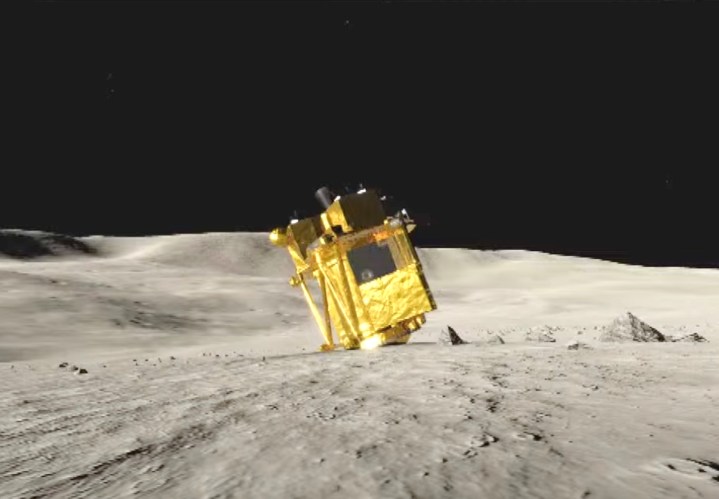
Japan achieved a space milestone last Saturday when it achieved a soft landing on the moon for the first time in its nation’s history, the same moment, becoming only the fifth country to perform the feat.
But shortly after landing, Japan’s space agency, JAXA, confirmed that the Smart Lander for Investigating Moon (SLIM) was experiencing an issue with its solar cells, so the mission could not proceed as planned. The team has now shut down the lander to preserve what little battery life remains while it considers its next move.
In another development shared on Thursday, JAXA revealed that the spacecraft was upside down on the lunar surface, an unfortunate outcome likely caused by an unstable touchdown following the failure of one of SLIM’s main engines during its final descent.
We know this because JAXA shared an image of the spacecraft captured by the Lunar Excursion Vehicle 2 (LEV-2), a palm-sized contraption deployed by SLIM and which has now become the first robot to conduct fully autonomous exploration on the lunar surface.
JAXA also published a clearer, computer-generated image showing SLIM in its final and somewhat unexpected resting position.

In a statement released on Thursday, JAXA said that data acquired before SLIM’s shutdown confirmed that the vehicle had reached the moon’s surface about 180 feet (55 meters) east of the original target landing site.
JAXA said that taking into account an obstacle avoidance maneuver that started at an altitude of about 164 feet (50 meters), SLIM’s landing accuracy could be considered as being within 32.8 feet (10 meters), possibly even 9.8 feet (3 meters). This is a major achievement as the mission’s main goal was to demonstrate pinpoint landing technology that aims for an accuracy of within 328 feet (100 meters).
SLIM’s landing technology, therefore, appears way better than that used by previous missions, which aimed for miles-wide landing zones. SLIM’s system could play an important role in future lunar missions, especially for those keen to land among rougher terrain that’s closer to areas thought to contain deposits of water ice, a resource that could one day be converted to fuel for rocket launches from the lunar surface to Mars and beyond.
In more good news for the mission team, Japan’s space agency added that it now understands that SLIM’s solar cells are facing west, suggesting a possibility of power generation and, therefore, recovery of the lander when the sun sets in that direction in the coming days.
Editors' Recommendations
- Japan’s lunar lander surprises team by waking up from cold lunar night
- Japan’s SLIM lunar lander is back in contact following blackout
- NASA confirms burn-up date for failed Peregrine spacecraft
- Fly your name to the moon as part of historic NASA mission
- NASA’s Orion spacecraft did something special exactly a year ago


